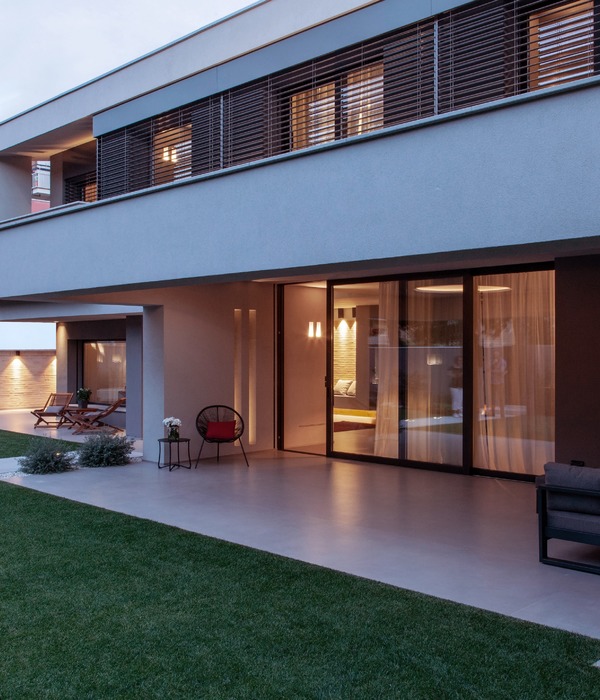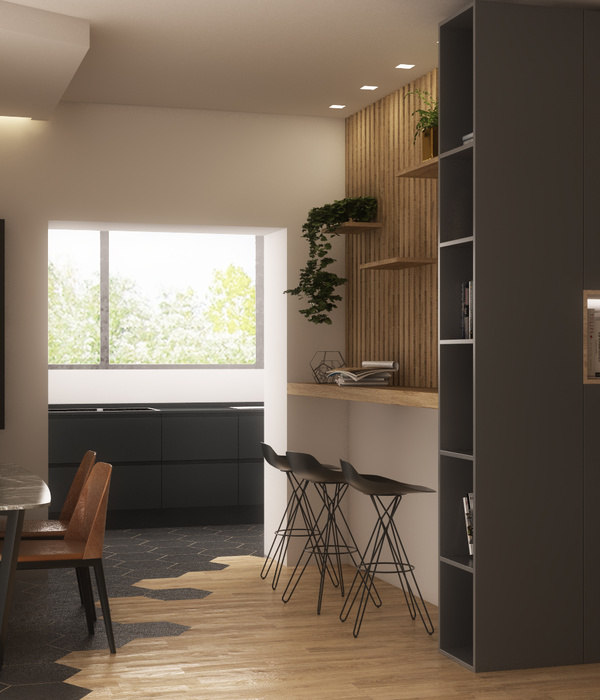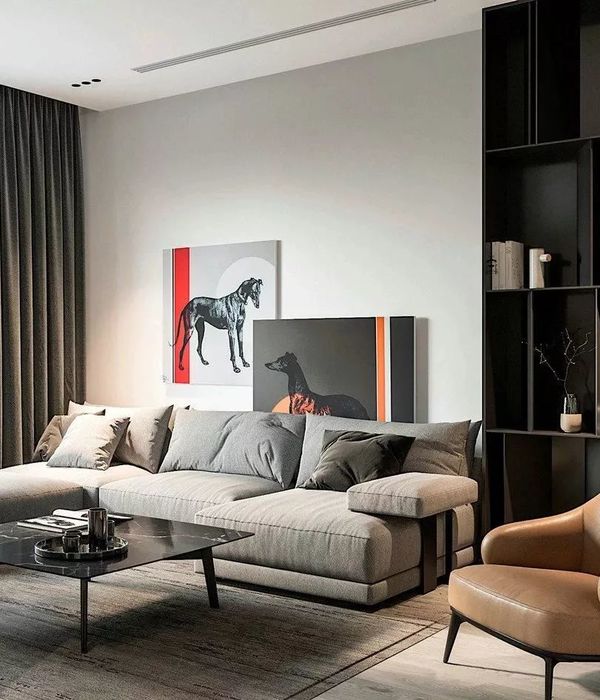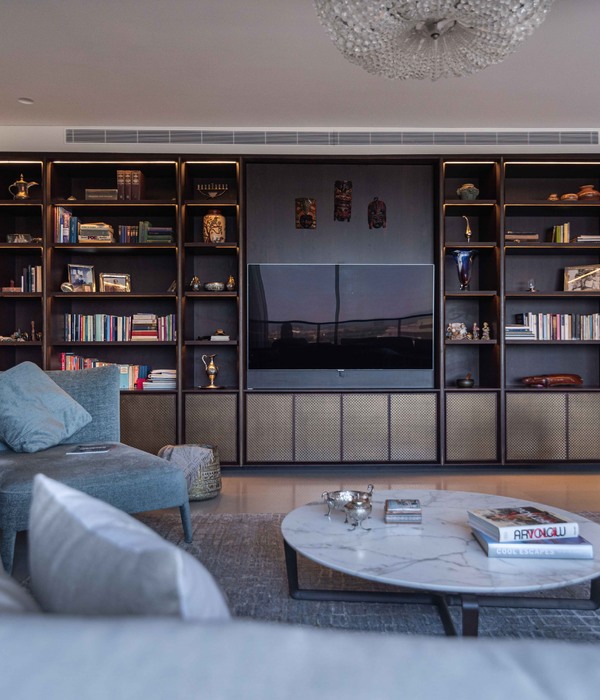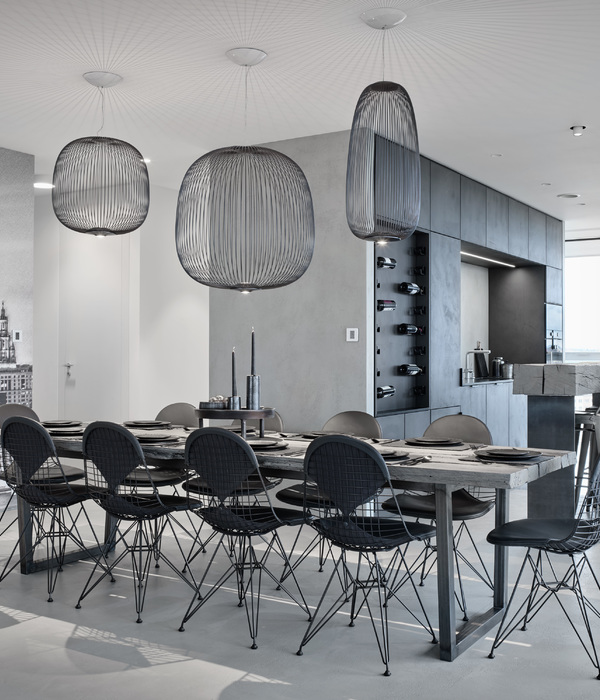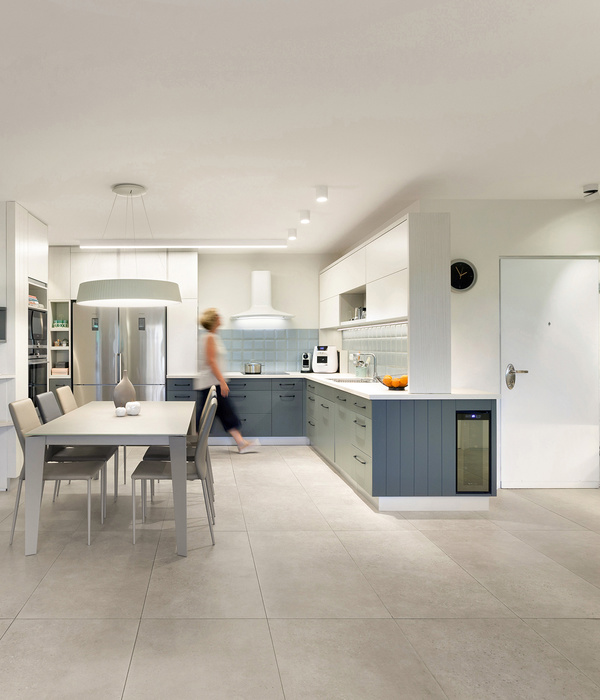The project is a synthesis of the couple’s past and future, interests, and passions. The house is conceptualized as a single, dark, rectangular volume. One corner, the garage, is broken off to create an entry courtyard. A singular, smooth column of Black Locust supports an inviting entry canopy. The house and garage are intentionally pulled apart to infuse a bit of the wild into daily routines. While the exterior volume is wrapped in black square-edged vertical metal siding, the courtyard is lined with a vertical rain screen of American Black Locust. Local stones, clustered plantings and swaying birch flow through this courtyard: in essence, nature wins.
The heart of the home is a central volume of American Walnut. All rooms feed off this hub and are drawn to it, revolving around the warmth of the material. Here, the couple walks on continuous white oak floors. Sitting comfortably in the living room or standing casually by the kitchen island, the view drifts out through large windows to rest on the cadence of the seasons, color spreading through the autumn leaves or dappled light on fresh snow. From the painting/spinning studio, the couple also enjoys views past the courtyard birches into the surroundings.
This house is a place where the residents continue to nurture their land and build strong roots, with a focus on sustainability. They are actively restoring the ravine from invasive species and personally plant no-mow meadows. Raised beds hold a vegetable garden that they maintain themselves. They also tap the onsite maples for syrup, boiled down in a fire from cordwood sourced on-site. The firepit of brick gabions is created from the rubble of a previous house on the site that burned down. The millworker who fabricated the walnut casework delivered a live-edge walnut dining table, created from a felled tree the couple rescued from their farm in Galena, Illinois.
{{item.text_origin}}



